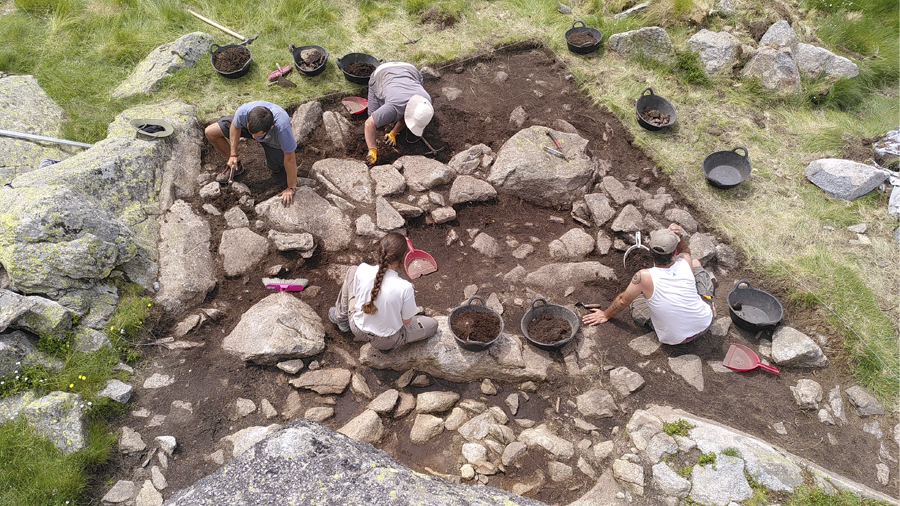Bronze Age house found at 2,280 metres in Aigüestortes
The High Mountain Archaeology Researc Group (Grup d'Arqueologia de l'Alta Muntanya de la UAB-CSIC, GAAM) has documented a house dating back from the Bronze Age and built in the Abric del Portarró shelter, at 2,280 metres above sea level. It is located inside the Aigüestortes i Estany de Sant Maurici National Park. This is possibly the oldest documented building remains to exist in all of the Pyrennees and date back some 3,800 years.

According to researchers from the Department of Prehistory conducting research at the Abric del Portarró shelter, the discovery will provide them with highly valuable information, given that very little has been found about the Bronze Age in the Aigüestortes area, a period in which the greatest human impact on high mountain vegetation occurred.
The remains were located under the slope that the archaeologists have raised to extend the digging site of the Abric del Portarró and which has allowed them to see the base of a stone wall. The discovery will make GAAM rethink the objectives of their work, since they had planned to finish the excavation this year.
During the ten days of this year's campaign, the researchers also located abundant remains of ceramic objects related to food or used for cooking, eating or storing food, as well as an arrowhead.
According to Ermengol Gassiot, director of the GAAM, the findings indicate that "during prehistoric times, settlements in high areas were much more stable than we might have thought, probably lasting between four or five months. And they had nothing to do with the shepherd's huts we know today; people prioritised mobility and carrying few utensils".
Gassiot pointed out that in previous campaigns, remains of sickles, the tool used for reaping, had been found, a fact that may lead one to think of a high mountain with more cereal fields than could now be imagined at altitudes of over 2,000 metres.
"All the archaeological data that dig after dig we have been collecting at different sites in the National Park contribute to changing the vision we have of prehistoric human groups in the high mountains," says Gassiot. "In areas more than 2,000 metres above sea level, not only was livestock farming the predominant activity, but agriculture could also have played an important role," he adds. The tools used for agricultural work, which archaeologists have documented, were made of flint, a material that does not exist in the Aigüestortes National Park. This fact leads researchers to think that they came from farther away and that the groups moved from one place to another and were not as isolated as is commonly thought.
The results obtained in previous campaigns have shown that the Abric del Portarró and others nearby, such as Les Obagues de Ratera, were places that were used repeatedly at many different times. Les Obagues de Ratera, for example, was first used as a shelter 10,000 years ago and continued to be used recurringly until recently.